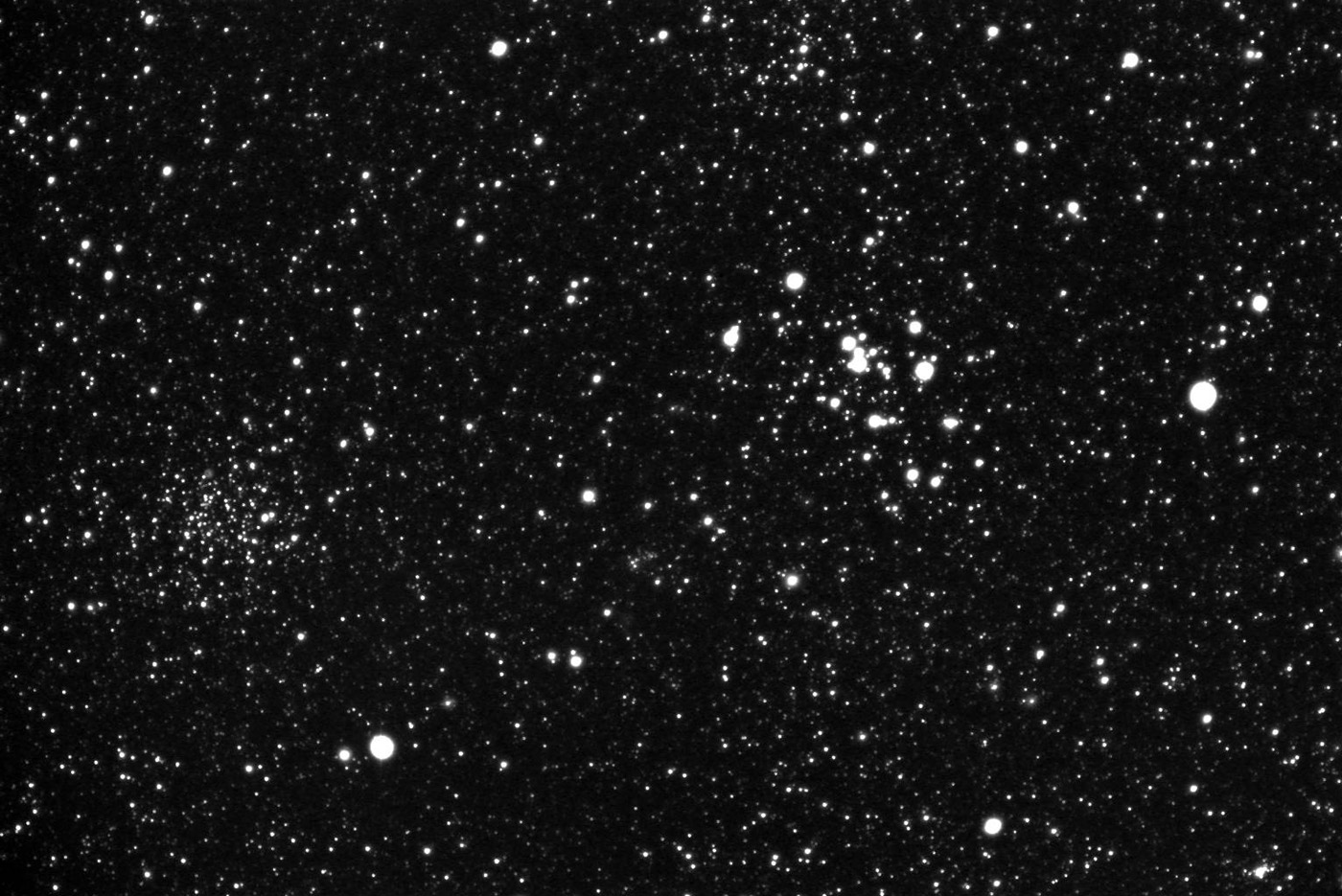M46, M47, and NGC 2423
This picture shows three open clusters in Puppis, although part of NGC 2423 is actually off the top of the frame. M47 is the large bright cluster right of and slightly above the center of the image. Containing about 50 stars in a volume of about 12 light years of space at a distance of about 1600 light years, the cluster can be glimpsed by the naked eye in a dark sky. The brightest star is a B2 giant and 2 others are giants of spectral type K. M47 is about 78 million years old. The fainter cluster at the left side of the image is M46, a physically larger star group but more distant, at about 5400 light years. It contains about 500 stars but only about 150 are brighter than magnitude 14, the brightest being an A0 star of magnitude 9. The cluster is estimated to be about 300 million years old. A very close examination of the cluster will reveal a faint round fuzzy object the size of a medium star right at the top of M46. This is a planetary nebula, NGC 2438, which happens to lie in the same area of sky but is much closer at about 2900 light years. At the top of the frame is the small faint open cluster NGC 2423, which lies at a distance of just under 2500 light years. This cluster is notable for being the host of a red giant star (visual magnitude 9.45) which is confirmed to possess an extrasolar planet of about 10 1/2 times the mass of Jupiter. The planet may actually be a brown dwarf.
 |
| Taken November 23, 2009, with the ST-8 camera mounted on the Nikkor 300mm lens. Exposure was 5 minutes at F:4.5 |